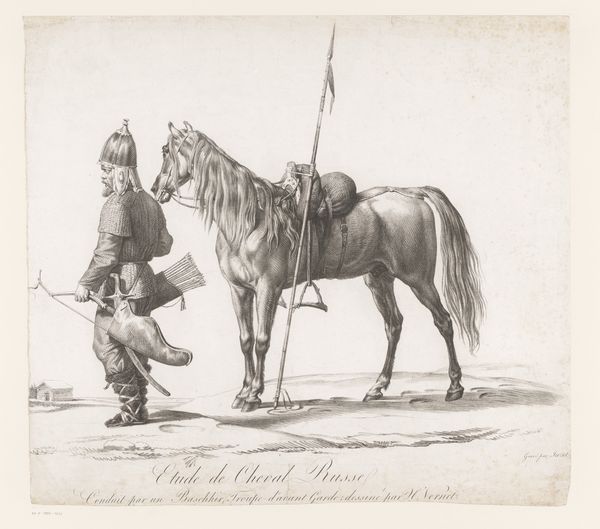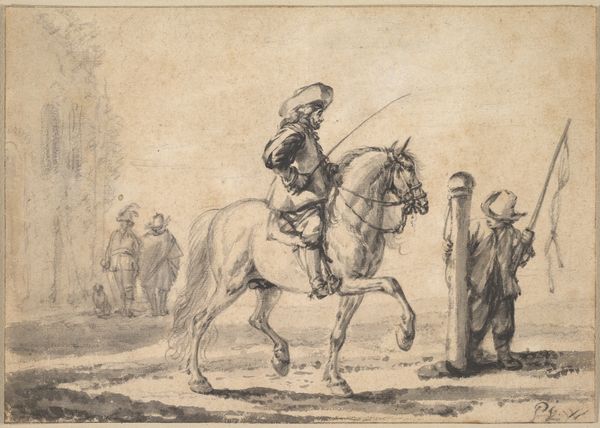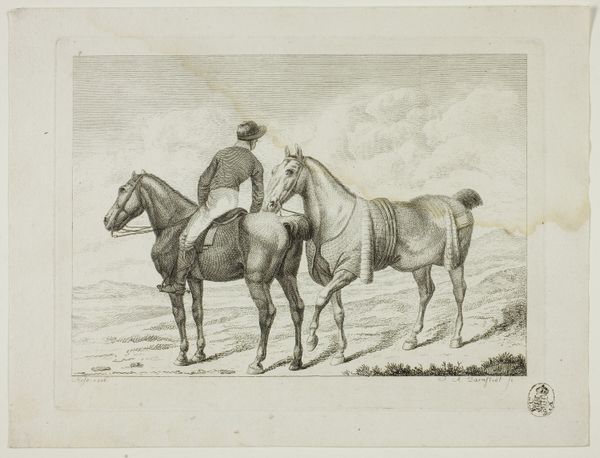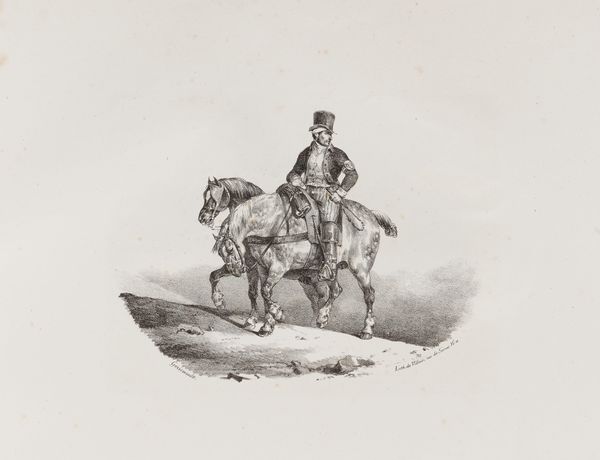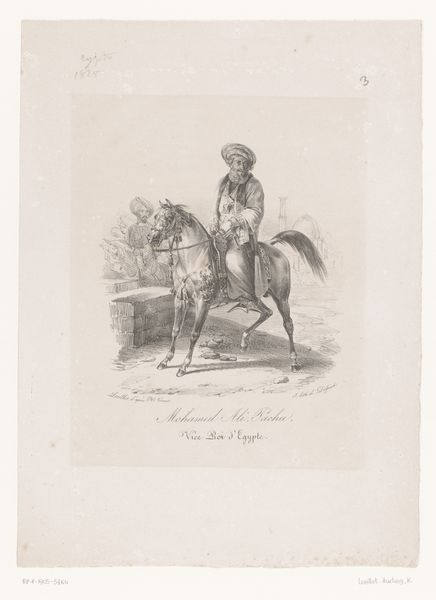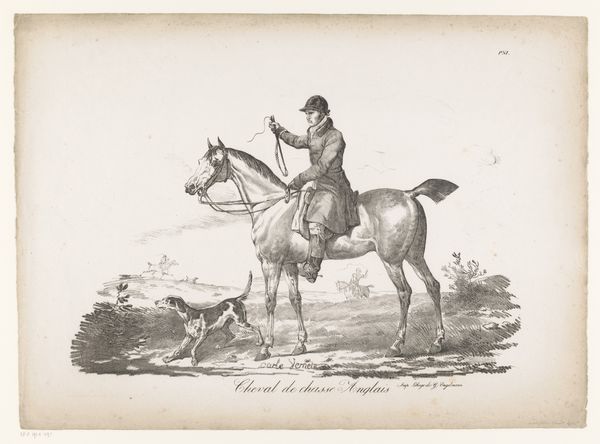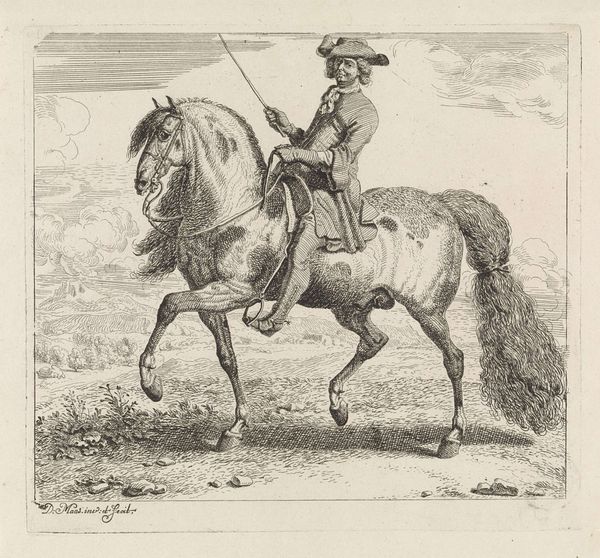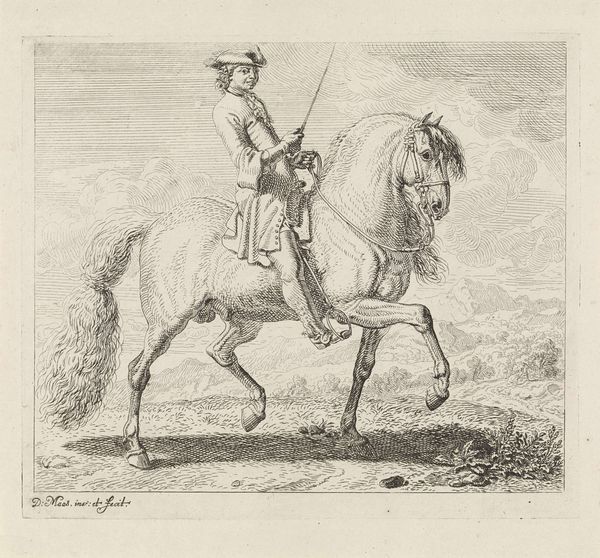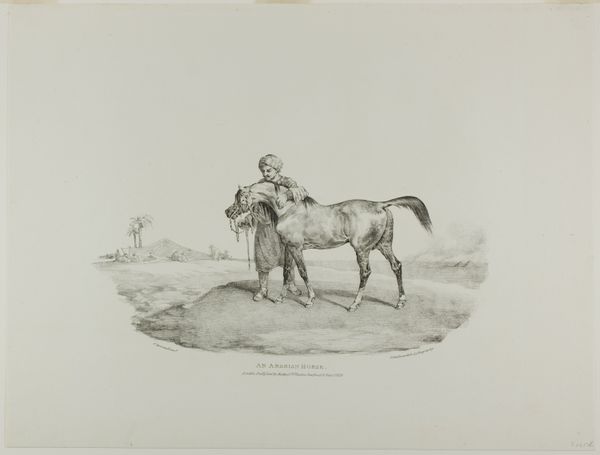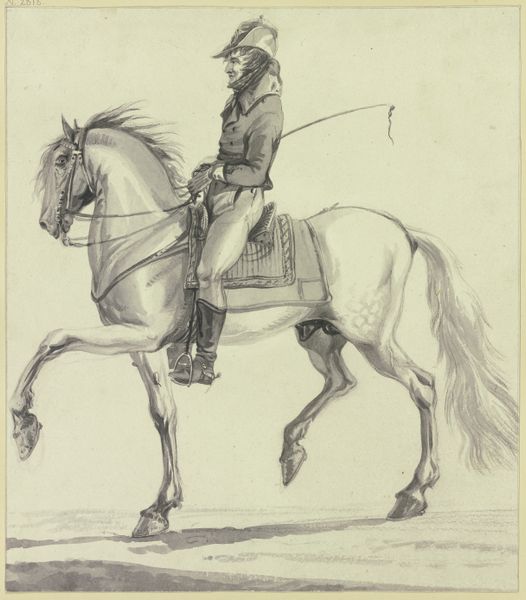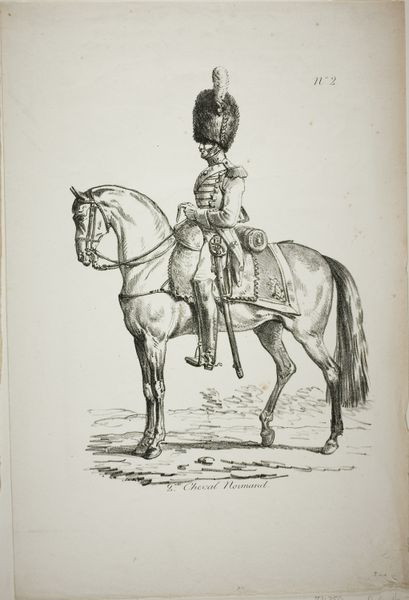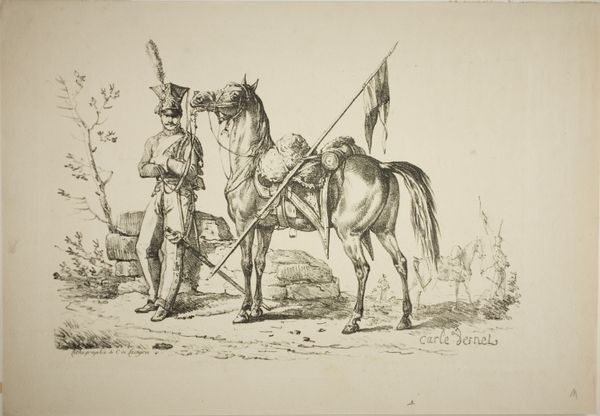
drawing, pencil
#
portrait
#
drawing
#
landscape
#
pencil
#
realism
Dimensions: image (irregular): 10.16 × 14.29 cm (4 × 5 5/8 in.) sheet: 12.38 × 16.51 cm (4 7/8 × 6 1/2 in.)
Copyright: National Gallery of Art: CC0 1.0
Curator: Welcome. Let’s discuss William Tylee Ranney’s "Dragoon with His Charger," a pencil drawing dating from approximately 1830 to 1840. Editor: It's a very striking piece. The initial impression is of somber dignity, almost resignation. The shading, though delicate, creates a sense of weight and seriousness. Curator: That gravity resonates with the historical role of dragoons. Originally European mounted infantry, by the 19th century, they had evolved into heavy cavalry—a tool of expansion and control often involved in the displacement of indigenous peoples. Editor: The composition directs our reading. The way the horse hangs its head, mirroring the soldier’s stance—note the subtle angle of his body—emphasizes a visual parallelism, binding the two. What do you make of the textural variations in the pencil work? Curator: The softness used for the horse's mane and the soldier's jacket, compared to the sharper lines defining the equipment and weapons, suggests a fragility amidst the apparatus of war. It's interesting to think about how Ranney is negotiating power dynamics and identity in a relatively simple drawing. The positioning is very important in a narrative, the Dragoon stands with his Charger, and in his control. Editor: True, Ranney is clearly attending to the visual contrast. Notice how the play of light across the forms further underscores their intertwined fate. The limited tonal range doesn't restrict, but concentrates, visual impact. This creates an interplay of precision and subtlety. Curator: And, in its broader implications, such work reflects the complex role of the military figure—simultaneously an instrument of conquest and an emblem of societal order. His dress, his station and his purpose all align to display a reality about conflict and expansion. Editor: Yes, seeing it this way enriches the visual elements. Focusing on Ranney’s choices shows us how formal means become integral to its thematic strength. Curator: Exactly. Examining art within its socio-historical contexts illuminates power structures and historical impact. Editor: But decoding composition brings those forces into sharper resolution. A real meeting of eyes to find context and to read the details to greater degrees of information and interest.
Comments
No comments
Be the first to comment and join the conversation on the ultimate creative platform.
